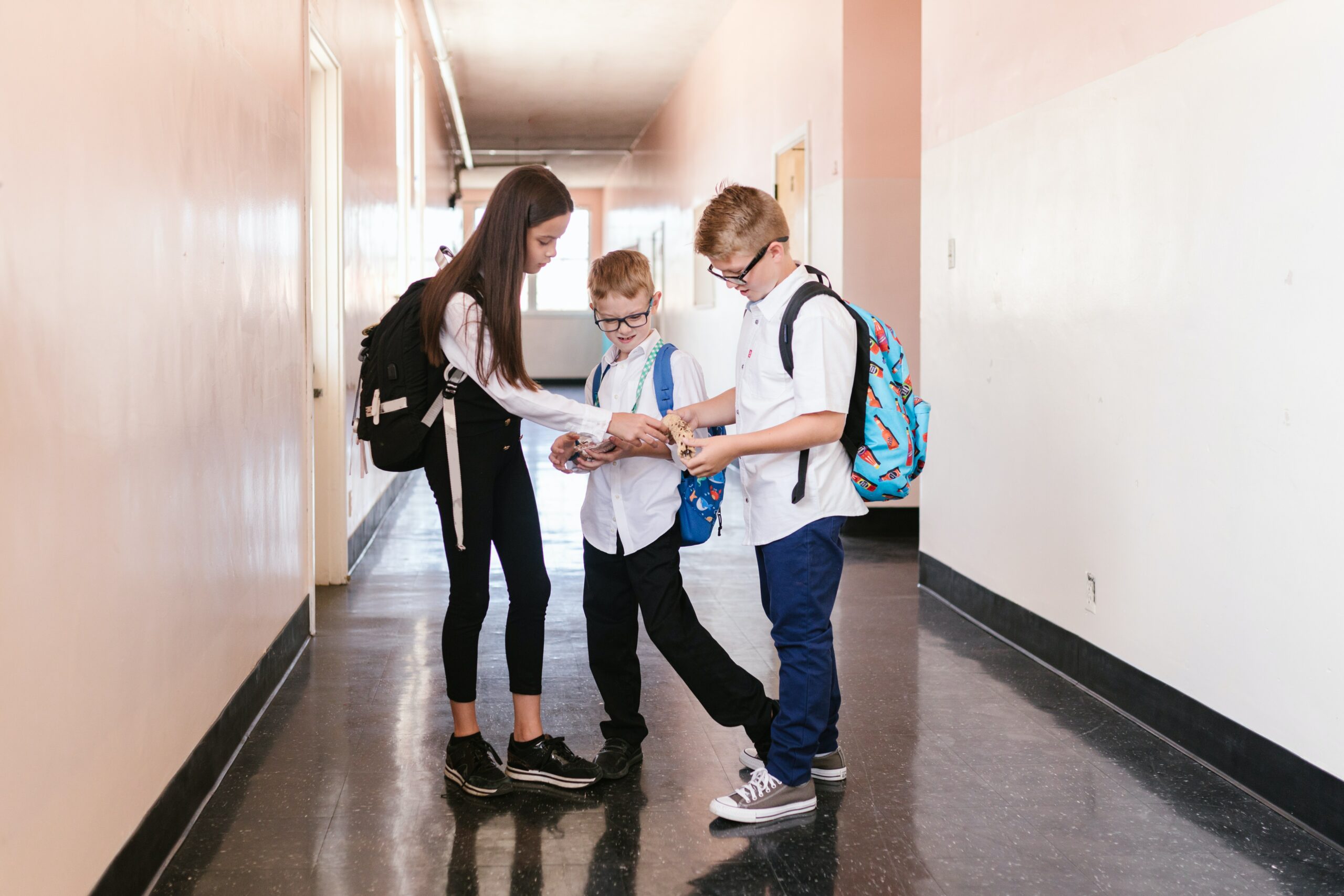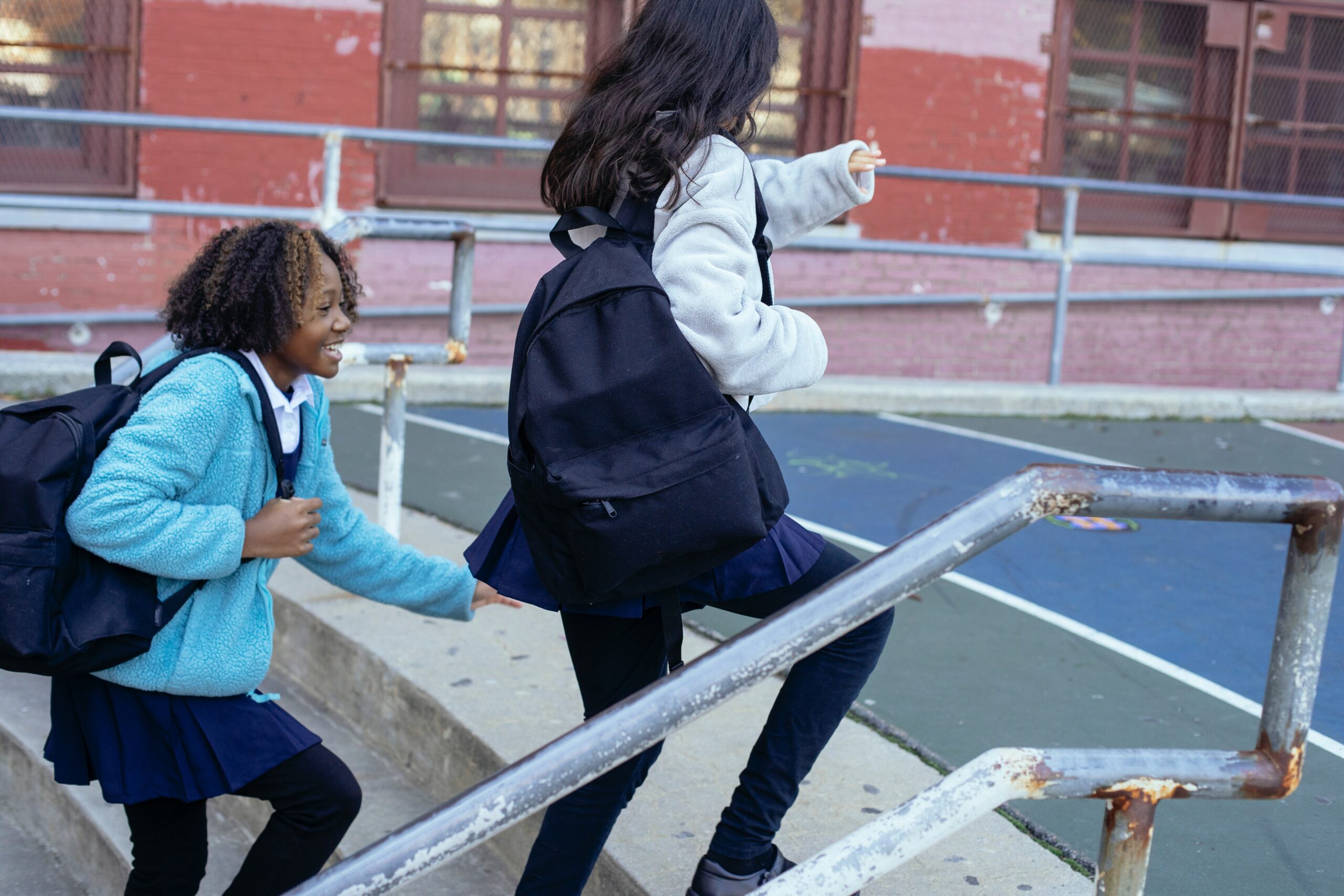
If you’ve ever been in high school you might remember walking to school with your backpack before suddenly hearing a loud and long rip followed by the sound of your belongings crashing to the ground. Backpacks have a tendency to be sturdy, but even when wearing a backpack correctly the weight of textbooks is eventually mightier and can cause them to fail.
While advances have been made in the direction of having electronic versions of school books in comparison to heavy physical copies, many children are still lugging heavy school supplies over their backs on the weekdays. As you might expect, this can have detrimental effects on your child’s still-developing body. In fact, a study found that the carrying of backpacks that exceed 15% of a child’s weight has been associated with the following:
- Neck pain
- Shoulder pain
- Numbness or tingling
- Kyphosis of the back
- Postural changes
The pain and discomfort associated with this can be so great that children stay home from school or they become limited in their activities, but it doesn’t have to be that way! There’s a lot you can do to minimize the impact of heavy backpacks on your child’s body.
Here are some tips for proper backpack safety!
Wearing Both Shoulder Straps
When children wear both straps over their shoulders, the weight of the backpack is evenly distributed. This means they won’t hike one shoulder higher than the other and they won’t have to lean to one side in order to compensate for the weight.
In addition to using both shoulder straps at the same time, it’s important to look for padded shoulder straps so that the straps don’t dig into a child’s shoulders. Unpadded, narrow straps can contribute to shoulder pain as well as numbness and tingling going down the arms due to the nerves becoming affected.

Reducing Backpack Weight
Lighten the load! Just as we mentioned previously, research found that your child’s backpack and contents shouldn’t exceed 15% of their body weight. Children who make frequent trips to their lockers and those who have electronic versions of their textbooks have an easier time carrying lighter loads. If possible, the use of a wheeled backpack is best because it takes the load completely off of your child, except children might fight you on this subject the older they get.
Having multiple compartments
With a trend towards more minimalistic designs, new backpacks have become more and more like sacks with shoulder straps. While you might not need a dozen compartments, having different pockets means that your child’s school supplies are organized and, most importantly, they’re not excessively shifting around the inside.
Having no pockets makes it harder to properly distribute the weight of the school supplies while also making it more likely for things to dig into your child’s back uncomfortably. Consider getting a back with a side compartment for a water bottle or calculator and a couple of inside pockets to hold things such as pencil cases, wallets or electronics.
Consider an ergonomic backpack with a chest strap
If you’ve seen a soldier of the military dressed in full gear, you might have noticed their backpacks have chest straps and sometimes lumbar straps as well. There’s a reason for this! By adjusting straps to your chest, you are able to better secure the backpack to your body. The more securely attached a bag is and the less movement or swinging you allow it to take, the less your stabilization muscles have to work in order to keep you upright and comfortable. The less these muscles work, the greater your child’s chances of avoiding tightness, soreness and spasms.

Consider Chiropractic Care
Chiropractic is a great option in order to counteract the effects of wearing large and heavy backpacks all day.
The progressive weight, swinging movement, and slipping of shoulder straps associated with backpacks can cause microtraumas to a child’s spine. When the spinal bones repeatedly suffer from slight misalignments or microtraumas, the effects can add up and result in structural changes to the child’s body.

With chiropractic care, you can restore your child’s structure to its ideal position and reduce muscle spasms, as well as shoulder and neck pain. Not only will they feel better, by reducing structural changes you can decrease the pressure on nerves that can affect the communication going to their different organs and tissues, meaning that you may see improvements in their overall health.


Recent Comments